Hawaiian Native Arts
by Tom Conger
Hawaii, the most remote socio-economic complex on the planet, has been a reliable source of residents for RVM since our CCRC opened in 1961. The culture in Hawaii is fairly young, having only been exposed to “western” mores since the 1820 arrival from Boston of Christian missionaries from the American Board of Commissioners for Foreign Missions. In the brief couple of centuries since, the original Polynesian culture—presumably brought with original settlers to the isles from the Marquesas ca. 400 CE—has been flavored by influences from many global cultures; these include Asian contract workers, Portuguese middle managers, Scottish and German engineers, and other imported population groups who came to work in the lucrative agricultural economy which prevailed from the time of the Kamehamehas until recent decades when the last sugar cane and pineapple were harvested and the processing plants shut down. This rainbow of influences, including languages, food, clothing, and other cultural customs has contributed to what is often seen as a “melting pot” society. And from that variegated melding of diverse cultures has emerged what is now regarded as the “aloha spirit.” Exactly how that is defined is subject to any number of different perspectives, but an attitude of friendly tolerance does pervade in the islands.
(And they eat a lot of SPAM… 😁)
There is no question that RVM does maintain a certain Hawaiian flavor, as anywhere from 10% to 17% of all residents have some roots in the Aloha State. The reasons for this are many; foremost is the astronomical cost of living in Hawaii, coupled with comparatively reasonable pricing of accommodations here at RVM. Given that imponderable cost of living in the most remote civilization the world, with its single industry economy, many of today’s young adults are making their careers/lives elsewhere from the isles of their birth. Thus retirement on the left coast of the vast US affords retirees simpler contact with their kids and grands.
To make the transition from that youngest and most unique state in the union requires one to move away from many distinct cultural factors which make up life in Hawaii. Some facets of that distinct lifestyle are what binds many of us to our native shores, and most displaced kama’aina seem to do what they can to replicate on the mainland their accustomed culture. Among the most common carryovers are food, fashion, and furnishings. For purposes of this series of articles, we want to focus on the artifacts which folks bring with them when they relocate (see: fashion & furnishings). As this writer moved into RVM a mere fortnight before the lockdown, and this presentation is getting under way as pandemic restrictions are just beginning to loosen up, we will have to start small and expand as we make more contacts amongst our Hawaiian contingent, and exposure to more artifacts is made possible.
Shelly Campbell brought with her a nice collection of articles made in Hawaii which serve as daily reminders of her 46 happy years there.
She has two Hawaiian quilts, both apparently hibiscus pattern, which adorn the master bed and a daybed/pune’e.
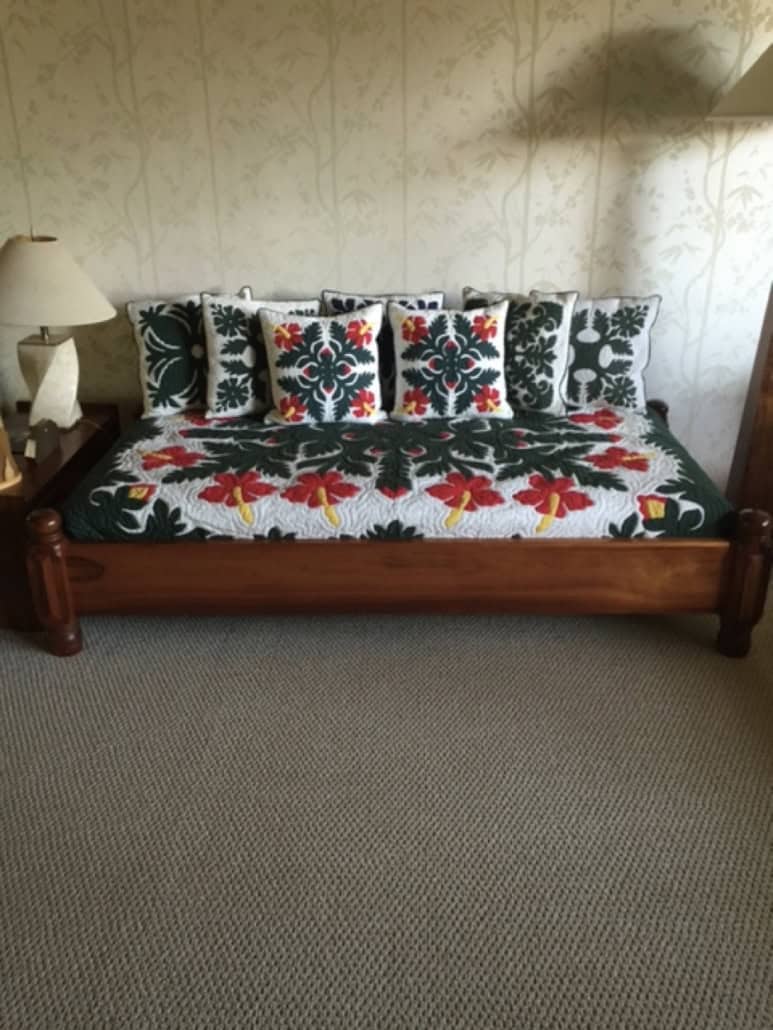

Please note the koa bedstead by Martin & MacArthur.
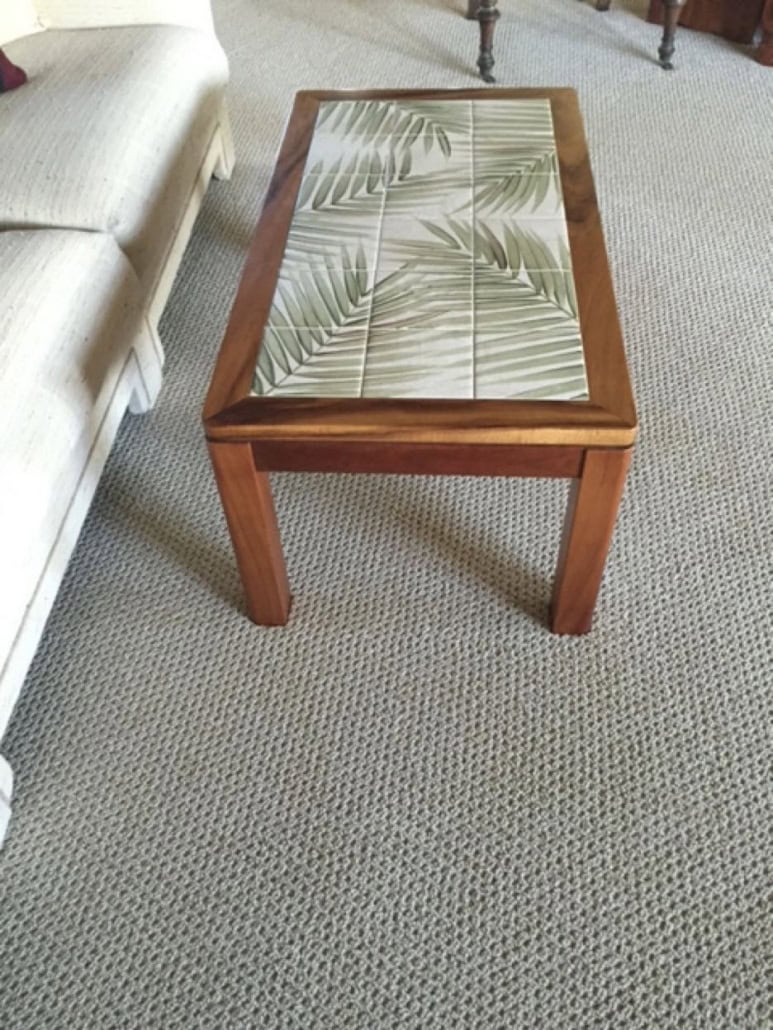
Also by Martin & MacArthur is this koa coffee table with ceramic palm frond inlay
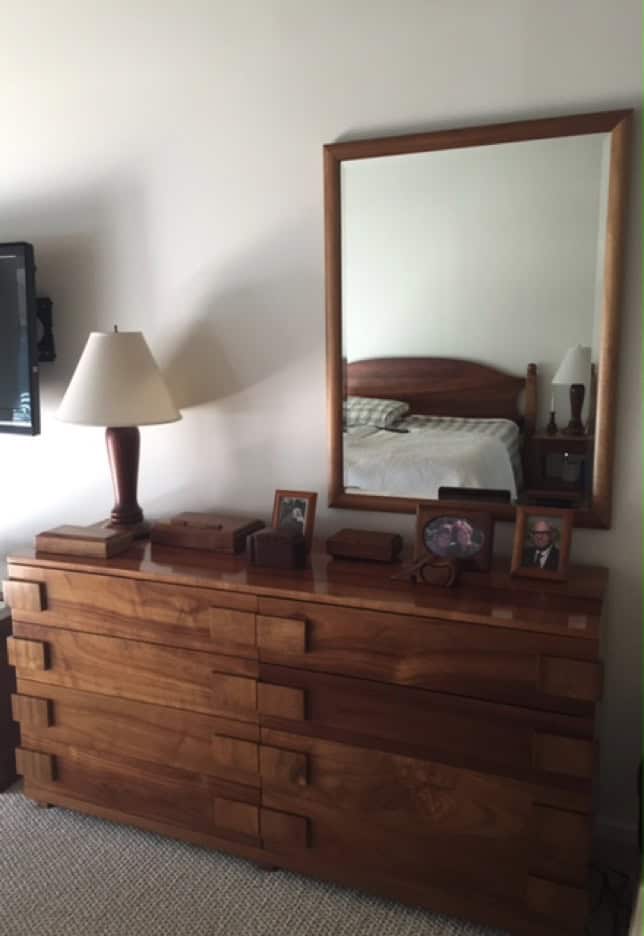
This handmade koa dresser is a lovely addition to the boudoir.
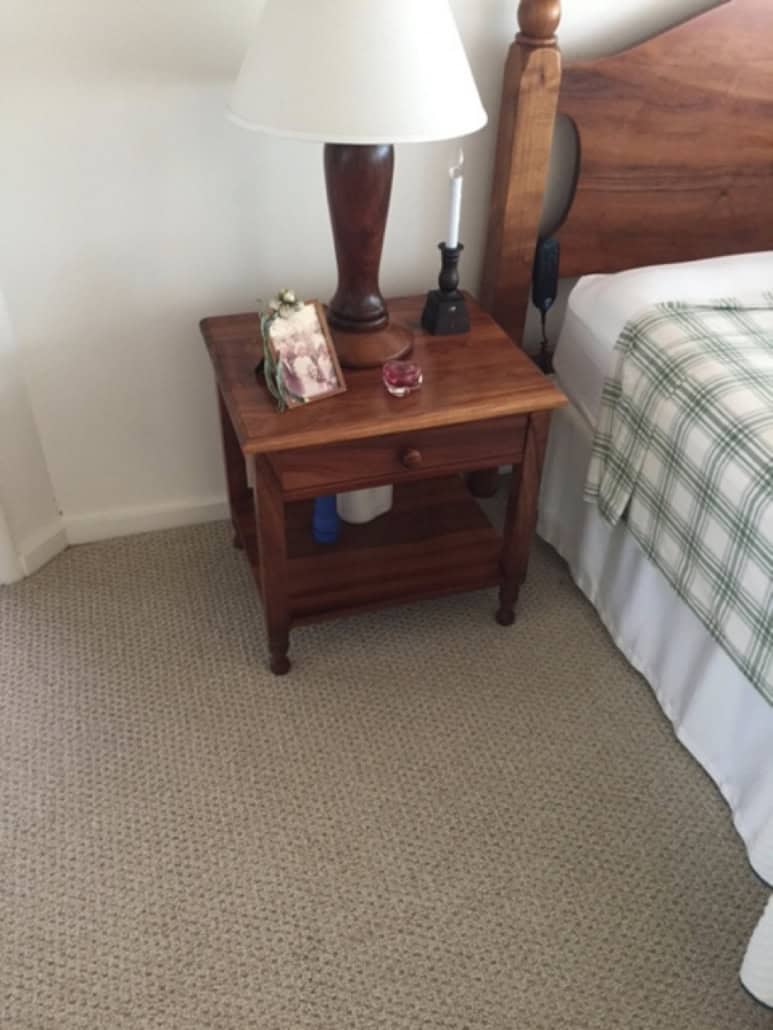
Also the koa nightstand
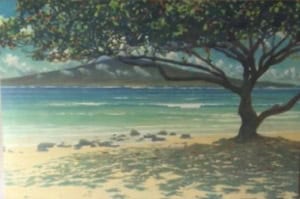
A fine painting by contemporary artist Russell Lowery depicts Lanai island as seem from a Maui beachfront:
These are some examples of Hawaii artisanship serving proudly in the cottage of one resident. To round out this first installment, here are a few items from the writer’s own treasures:
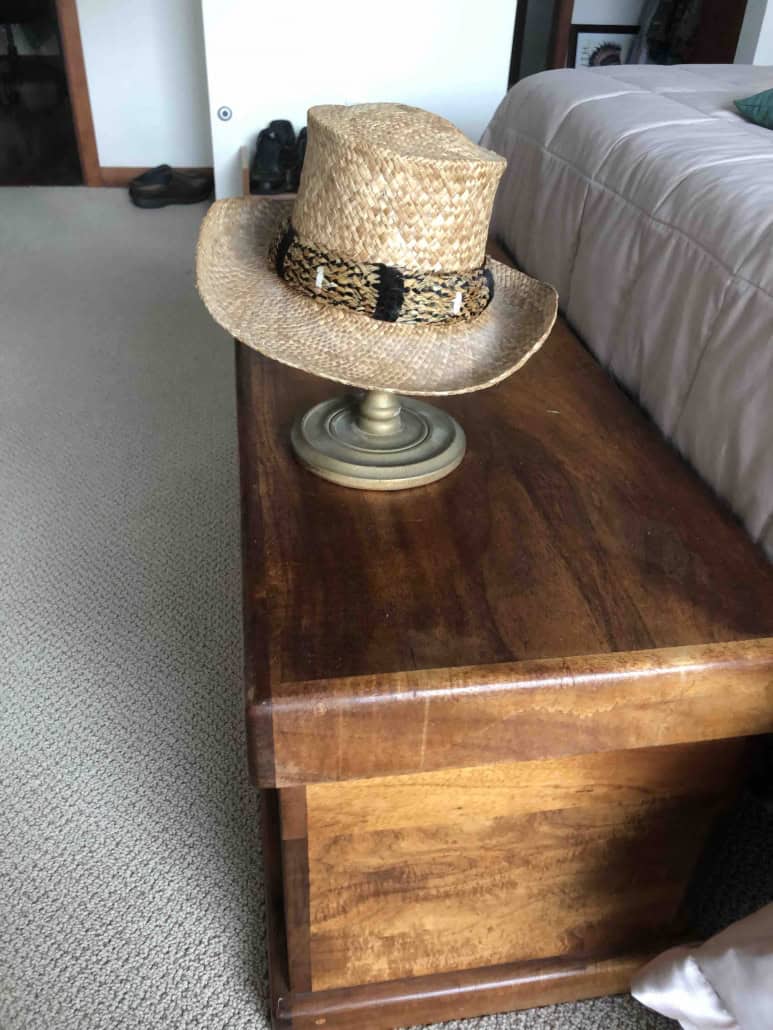
Lauhala hat with feather lei hatband (Maui craftsfolk): birthday present (l-o-n-g ago).
Koa chest by Maui woodworker from 1984.
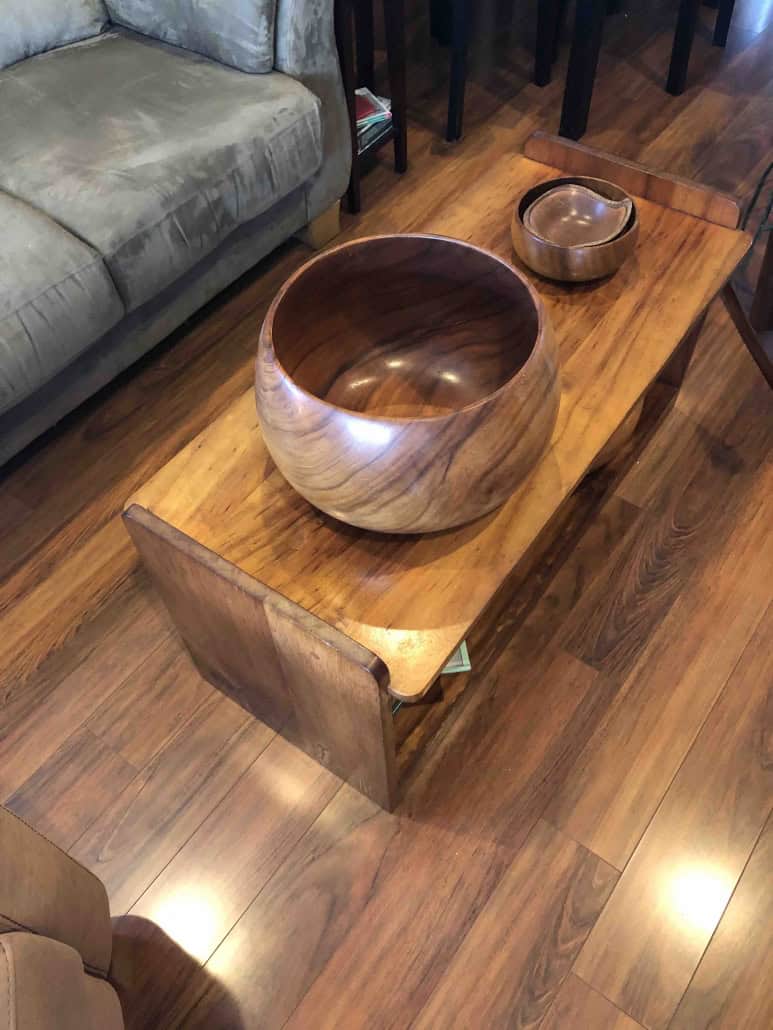
Koa calabashes and coffee table (family heirlooms)
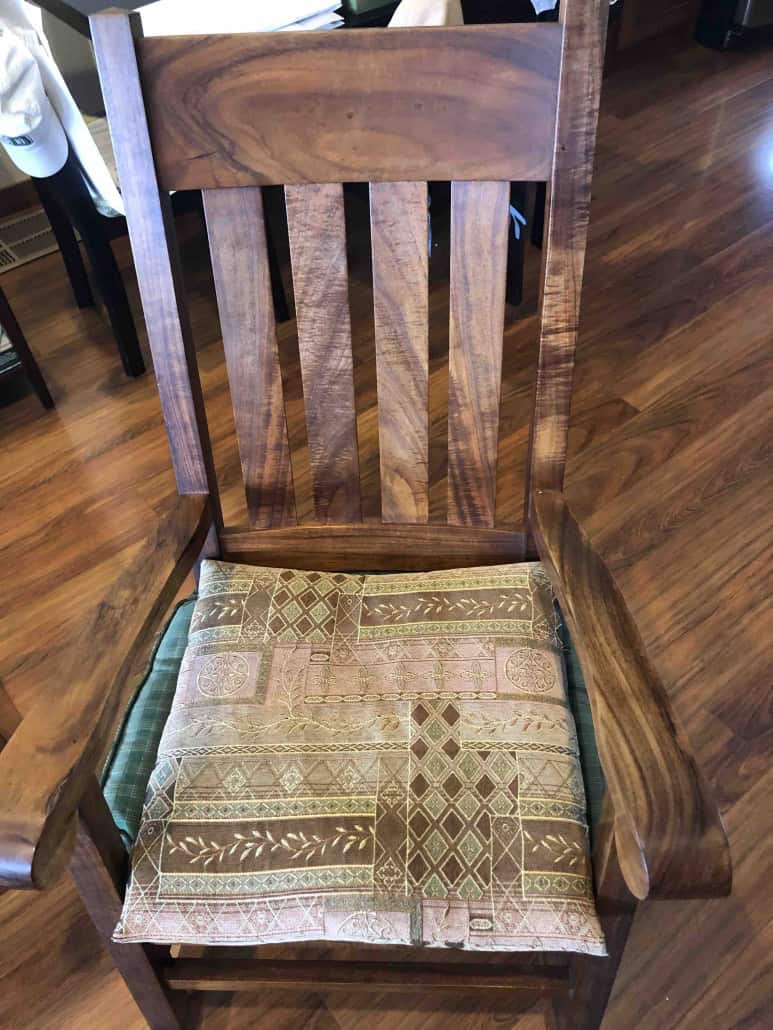
Koa rocker by Martin & MacArthur (late 1980s)
So, as you can see from just two ol’ kama’aina, there is a nucleus of Hawaii crafts here on campus. We encourage readers who might also have items of historic or artistic significance to contact The Complement and share what’s made it from that distant archipelago to the Rogue Valley in southern Oregon. Me ke aloha pumehana. ( for non Hawaiians, this means Warmest Aloha)

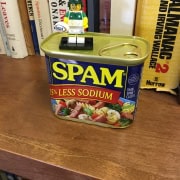

Leave a Reply
Want to join the discussion?Feel free to contribute!